Cohousing Is an Option in a Changing Retirement World
Category: Active adult communities
February 14, 2018 — The front edge of baby boomers turns 72 years old this year. By now many are well into retirement. Experts are curious – will this revolutionary generation stick to the patterns of their parents in retirement, or will they break new ground, just like they did in music, the arts, and lifestyles? We think the answer will be yes – to both questions.
Most things won’t change. Millions will move to 55+ and active adult communities in their 60s and 70s, searching for non-stop activities and a social setting where making friends fast is easy. The vast majority of boomers will be like their parents in that they won’t move anywhere – they will either stay where they live now as long as they can, or move to a downsized home in the same area. But we can also be assured that many millions of boomers will blaze new housing paths in their retirement, and for a small segment, one of those options will be living in a cohousing community.
Cohousing – an option for a small but significant segment
For all the retirees who dream of living in their own home and beholding to no one, or heaven forbid, an HOA, there are others are where having a big sense of community is a primary concern, even more important than economics. A recent New York Times feature, There’s Community and Consensus, but No Commune, provides an excellent overview of how cohousing began and continues to grow as a retirement choice. According to the Cohousing Association of the United States there are 165 cohousing communities in the U.S. A term they like to use is “intentional communities”, which means the residents choose to live together in a village of their own making, sharing some resources on purpose. Living together reflects their shared values.
Intentional Communities come in many shapes and sizes, and go by many names. This includes cohousing, ecovillages, cooperative houses, communes, etc.
Typically members of the community own their own homes and pay fees to share some facilities, such as common areas and infrastructure. The homes are usually fairly small and clustered, facing each other to create a sense of community. Cars, roads, and driveways are on the outside, with homes opening to one another for neighborhood. In some communities members are expected to share a common meal daily or weekly. Decisions on how to operate the community are collectively agreed upon. Occasionally these communities are open to all ages, often with families with children, but more times than not they are just for people 55+. Besides providing community, another benefit is economic, since sharing resources is more efficient than paying for everything yourself.
An idea from Denmark
The popularity of the cohousing movement is traced to Charles Durrett and Kathryn McCamant, who noticed an all-ages community while students at the University of Copenhagen. Durrett recalled what struck them in The Times: “People in this one development were always out there talking to each other, sitting at picnic tables drinking tea. There were children running from house to house, and people coming and going to… the common house, where nobody lived and apparently everybody lived.”
The couple published a book about cohousing in 1988. Shortly after that they built Muir Commons, which became America’s first cohousing community. Since then McCamant & Durrett Architects/The Cohousing Company, has designed 55 cohousing communities across the United States. At Topretirements we have 40 communities that claim to be cohousing developments in our database.
Cohousing communities come in all types.
Although every cohousing community has some degree of uniqueness, there are some common threads.
– The properties are usually quite compact with small yards
– The number of housing units is quite small compared to other types of developments, usually less than 50.
– They are usually environmentally friendly and use sustainable energy sources
– Some have an urban setting, while others are in the countryside
– Obviously, they attract people who like to be around other people
– They offer an excellent counter to the isolation that old age often brings. Having close neighbors whose lives are intertwined provides companionship, resources, and support that are not found for people living alone in the suburbs.
– Some are designed for certain groups of people. Pilgrim Place in Claremont, California. It is an intentional CCRC community for retirees from the clergy and non-profit world. Residents share in intellectual stimulation while enjoying extensive recreational and other activities. Silver Sage Village in Boulder (CO) though very small, is one of America’s most known cohousing communities. It consists of 16 single-story attached homes that promote Creative Aging, along with a 5000 sq.ft community center.
Another interesting community for artists is the Louisville Artists Cohousing in Boulder, CO, which is currently in development. According to their website, you don’t have to consider yourself an artist to live in this community. Members with art interests of all types are welcome: such as music, dance, literary, media, visual arts, sculpture and crafts. Singles, couples and families of all ages building this cohousing community.
40 cohousing communities in the Topretirements Database
To give you a flavor of what the diversity that these cohousing communities have to offer, here is a random sample of some developments in our database.
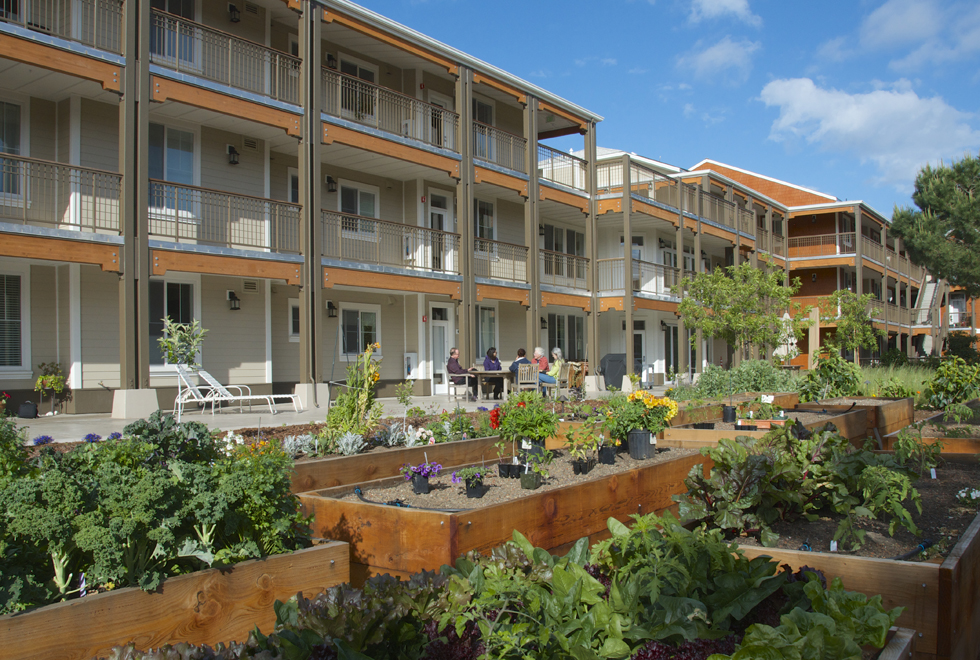
Mountain View Cohousing Community in Mountain View, California, northwest of San Jose, was designed to be a neighborhood of upscale energy-efficient condominiums, and is within walking distance to restaurants, parks, the library and a performing arts center. Residents share common meals a couple of times a week while developing a camaraderie. The community features 6,000 square feet of common space for socializing, entertainment, dining, and exercise. Other amenities include community gardens and fruit trees, along with underground parking and storage, and guest rooms. Mountain View is governed by a Home Owners Association.
Muir Commons. This, the first cohousing community in America is now home to approximately 45 adults and 35 children. Households include a variety of family structures. Most homes are owner-occupied. Muir Commons is made up of 26 homes on just under three acres. Each individual house includes complete kitchens and private yards. Houses come in three models ranging from 808 to 1381 square feet. The clustered homes face a central pedestrian pathway while the backyards face the outer edges of the site. Outdoor features at Muir Commons include a garden, an orchard, children’s playground, lawns, and “nodes” to facilitate socializing. The extensive landscaping includes many drought-tolerant and native species. The 3,668 square foot Common House is the heart of the community and includes a large kitchen and dining area to accommodate community gatherings including shared meals.
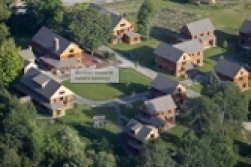
Nubanusit Neighborhood and Farm in Peterborough, NH. It is an inter-generational and green co-housing community that offers super energy-efficient homes with low monthly costs. The homes are clustered along pedestrian ways adjacent to our farm fields and the Nubanusit River. There is a spacious Common House; professional office and studio space in the renovated historic farmstead; and an organic farm.

Burbank Senior Artists Colony in Burbank, CA. This established community for retired artists represents a downtown version of cooperative community.
Durham Central Park Cohousing/strong>. A group of individuals, couples and families live here in an urban, intentional community in downtown Durham, North Carolina. Known as Durham Coho, it features shared community space for group gatherings, occasional shared meals, music, laundry, community garden, and a roof-top terrace. There are twenty-four private condominiums with balconies.
Comments? Please share your thoughts in the Comments section below.
For further reading:
Don’t See the Perfect Retirement Community: Why Not Start Your Own
Senior Housing Prognostications from NextAvenue for 2028
There’s Community and Consensus, But No Commune
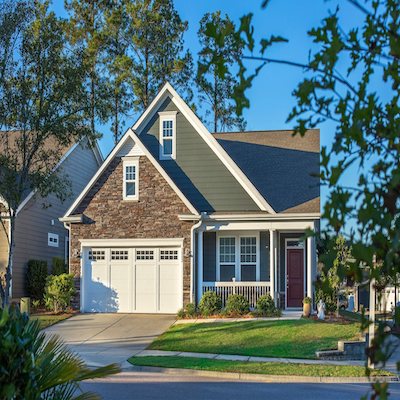



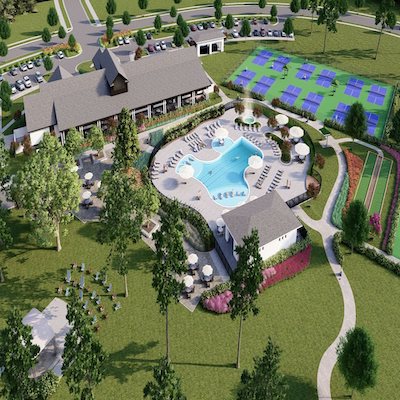
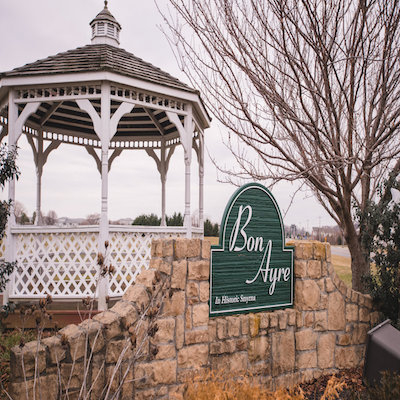
Comments on "Cohousing Is an Option in a Changing Retirement World"
Jan says:
http://www.cohousing.org/directory
Above is a link to co-housing communities by state. In my book, "The Single Woman's Guide to Retirement," I include a story from Jacque B., a single woman who moved to a co-housing community in California, Wolf Creek Lodge, after she found herself "devastatingly divorced after 30 years of marriage and desperately looking for some kind of silver lining." She loves the built-in support that co-housing provides.
nancy says:
There can be a "buy-in" fee associated with these communities, at least the ones I looked at, which put them out of the picture for me personally.
jean says:
it would be interesting to hear how the decline (physical or mental) of community members is handled. Is "buy in" money refunded to the heirs if the person has to leave or dies shortly after moving in? if a member develops antisocial behaviors are they kicked out?
Admin says:
From Martha..
Your title should be "Cohousing Offers a Great Retirement Alternative; IF YOU HAVE THE $$$" Overall I've found co-housing to be the most expensive option. I've been looking at co-housing for a number of years - and while it's an interesting concept - most of the communities are "high tech" homes which makes them fairly pricey. Not sure how the "millennials" can afford them. LOL.
ella says:
I am attracted to the concept of Cohousing; however as a nature lover, i'd love to see a community develop that provides more land per home as well as walking trails.
ingrid says:
agree with ella....many baby boomers are not in the best of physical condition ...espec. women....because "fitness" as we now know it was not a lifestyle priority
...as an athlete my entire life and outdoor /nature lover I would like to see a community with similar values and lots of green space.
how about an old ranch
also small indiv houses on larger land plots i.e. sandwiched together
as a pianist I need acoustic space
comments or like minded folks welcome
Kate says:
Isn't a 55+ community with a community-center a form of co-housing?
Editor's comment: In a way, yes, that would be a distant form of co-housing, since that facility is shared. But cohousing facilities are cooperative at their core - much more so than almost any 55+ community. Plus, they tend to have smaller living spaces and are much more clustered.
Virginia says:
Ella and Ingrid I’m with you. I love my animals and nature and would love to live in a community where others shared similar interests. A small cottage or cabin would be fine because I’m outdoors every minute I can be. As I get older I don’t want to have to drive to maintain social connections but I’m not willing to give up nature. I do hope there will be an affordable alternative. I’m still looking.
JCarol says:
Kate, my thinking goes along the same lines as yours.
Laney Humphrey says:
Now there are 4 of us - Ella, Ingrid, Virginia and me. I've looked at several cohousing developments because I like the concept. I've left each one knowing I need more space and separation. I've got a horse & a dog and want to be outdoors as much as possible. But I also want the sense of community and "family" cohousing provides. The problem is money as always. Land is increasingly expensive; architects need to be paid, etc., etc., etc. I keep hoping the right place is out there; I just have to find it. Laney
nancy says:
I'm right with you 4. Love to be outside, have a horse and want to be able to continue to trail ride for as long as possible,and garden. I also want a community where I know my neighbors. Currently I live where most everyone puts up those huge "privacy fences" and you only see your neighbor once a year at the most. I continue to look at cohousing communities, but can't get past the prices and affordability is a big factor. I don't care about communities that have hundreds of clubs, when I might only be interested in 5 at the most. Also do not want a bunch of picky rules, like some communities I looked into have.
Laney Humphrey says:
Some horsey friends & I have talked about buying land (somewhere cheap) & all building houses on it. We'd probably share pastures and barn & cooperate on running the shared areas. No one has volunteered to be the front person tho so right now it's only talk.
Jennifer says:
Laney, you might look in Indiana for your land--the southern part of the state has rolling hills and is beautiful. Many Amish have left Maryland and headed to Parke County, Indiana. You will have four seasons, but the cost of living is lower than many states and the land is reasonably priced south of Indianapolis.
nancy says:
I'd like to keep in touch with you, Laney. Some friends & I looked at something similar to your idea, but in the end they decided they liked their current homes too much to move. Not sure how you keep in touch with someone through this website.
Barbara Anne Dunn says:
Ella, Ingrid, Virginia and Laney, I've been reading your thread. As a lifelong horsewoman, animal lover, and lover of the wide-open spaces myself, I suggest you might want to look into Santa Fe, New Mexico and surrounds. Another resource for aging-in-place when you are wanting to maintain your lifestyle as much as possible is the Village to Village Network. Know there is one in Santa Fe. You can learn more about it here: www.vtvnetwork.org I think you are on the right track in wanting to establish a community-type living environment where you can help each other--especially if you want to keep and care for your horses and other animals. Wishing you the very best...
JoannL says:
Ladies just read your thread and will be following it as well. Another lifelong horse owner here with dogs too. Also agree on your comments for wide open space and access to trails. Sharing a common barn and chores sounds appealing too. I certainly want a smaller cottage house and prefer larger outdoor space. Access to decent healthcare and vet care that is not hours away is also a priority. Remote locations do not appeal to me.
Caps says:
If any of you horse and trail folks are interested in a central MN property...... we have a lovely place for sale with up to 16 acres available. Tell your friends, if you know of anyone. The ranch style home can accommodate a separate lower level walkout living arrangement. Huge shed too. It's not on the water, yet it is within 10 minutes of 20 different nice lakes, good veterinarians, and active horse clubs.
Laney Humphrey says:
Nancy & others - here's some background on my discussion with friends about starting a horse co-op. We know each other because we're all endurance riders. There are FB and email groups just for endurance riders so it was easy to keep connected. The problems were that we live all over the country; are different ages (late 50s to late 70s) with different time lines; but the biggest issue was lifestyle. Some want to be at least moderately close to civilization, others want to be entirely off the grid in the back of beyond.
There are equestrian focused developments throughout the country (including one in Santa Fe, Barbara Anne). If I could find one that I could afford in a place I want to live, I'd move in a heartbeat. Still looking! Laney
nancy says:
Thanks Laney. I've been checking out all the horse-related communities around here also, but they all are astronomically high-priced. I've thought seriously about moving into a 55+ community closer to where I currently ride, but they continue to tear down the wooded areas and put in either commercial places or very expensive housing developments (I have no idea how they think people can afford the houses they build). and take our riding trails away.
Barbara Anne Dunn says:
Laney, I now have a better concept of your group, and the spectrum of its needs and wants. Two of my very good friends live with their five horses in a Santa Fe, equestrian-focused community. It is pricey. Pooling resources is a way to overcome the expense barrier, but in studying co-housing communities over the past couple years, the common thread is the importance of agreement. Those invoved in the shared living really need to be on the same page for it to work. My opinion. Please, keep us updated as your search continues. I will keep an eye out for you as I continue mine. :-)
trudy says:
Ella, Ingrid, Virginia, Laney, Nancy and JoannL. I so relate. Am totally an animal person, have not had horses for years but could ride (western) before I could walk, and would like to have horses back in my life. Location important only as concerns issues you have already mentioned, plus state taxes being retirement friendly and not being off the grid. A sense of community, security, trust, friends and "family" was the world I grew up in, but is not the world today. If anyone finds a place, please share.
Dee Kraley says:
Been following this and I am also seeking same type of situation. Proud owner of a horse, dog and 2 cats. All the communities I have looked at that even remotely have horse facilities are too expensive for me.
Definitely interested in finding some like minded women.
Daisy May says:
Ella, Ingrid, Virginia, Laney, Nancy and JoannL, Trucy and Dee, it would be nice to keep in touch to discuss this further.
Admin's is there a way for like minded people to contact each other outside of this forum?
says:
Daisy May,
I can contact those you mentioned in your comment and they can choose to get in touch with you via email. Thanks for asking.
Judy Reese says:
I am in southeast SC, near Beaufort. You women are talking about something I am interested in as well. As much as I love all animals, I have not been around horses very much. But I love all animals and my dream has been a place where people can live cooperatively, but separately, with lots of cats and dogs. Taking care of animals is what I do best. It has to be somewhere warm, as it took me 60+ years to get out of the northeast, and I plan to never be cold again. If a group of you are talking and are willing to add me to the conversation, please do: jreeseny@gmail.com. Thanks.